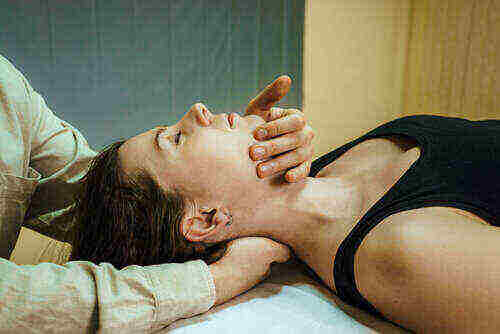
CranioSacral Therapy For Chronic Pain Management
Posted by Davon Willis on 2023-03-08
If you are looking for a therapy that can help you with your chronic pain, you may want to consider using cranial osteopathy. This method is known to be effective for treating a number of common chronic ailments. It can also be used as a means of improving the quality of life of patients.
Costs
Many people choose CranioSacral Therapy (CST) as their primary treatment for chronic neck and back pain. Although there are many health professionals who perform CST, it is important to know if the practitioner is a licensed health professional before proceeding with the treatment.
Among other things, this technique involves gentle manipulation of the bones in the cranium to normalize the flow of cerebrospinal fluid. This improves the body's ability to heal itself.
However, it is not a magic pill. It might take a couple of sessions before you notice any positive effects.
CranioSacral Therapy is one of several noninvasive treatments for chronic pain. Other options include spinal adjustments, transcranial magnetic stimulation, and repetitive transcranial magnetic stimulation.
Some studies have shown that CST can help with conditions such as migraines, TMJ syndrome, post-concussion syndrome, and fibromyalgia. The efficacy of the therapy has improved, but the effectiveness of the technique remains controversial.
The best way to find out if a provider is qualified to perform CST is to ask. Also, be sure to dress in comfortable clothing.
Outcomes
Craniosacral therapy is a form of bodywork used to treat chronic pain. Often it is requested for migraines and back and neck pain. The goal of craniosacral therapy is to reduce stress and pressure on the bones and spinal cord. It is also believed that it can improve brain function and circulation.
The results of a study showed that CST significantly decreased pain and disability in adults and infants. In addition, it increased body awareness and well-being.
Chronic pain is a leading cause of disability worldwide. It affects all age groups. Studies must examine the efficacy of different types of craniosacral therapy.
Craniosacral Therapy (CST) is a treatment method that uses light holding of the skull. This therapy is performed by a healthcare professional and usually requires 3 to 10 sessions. To participate in the study, patients must have moderate pain intensity over 45 mm on a 100-mm Visual Analogue Scale (VAS).
For studies that included children, the criteria were that the children had moderate pain intensity over 45 mm on s 100-mm VAS and that the pain was not caused by an inflammatory disease. The primary outcome was the average pain intensity over a seven-day period.
Biological basis
Craniosacral therapy is an alternative medicine treatment that relies on a noninvasive hands-on approach. The technique is usually administered by chiropractors, osteopathic physicians, massage therapists, and physical and occupational therapists. However, the mechanism behind its effectiveness has not been fully established.
Craniosacral therapy is said to improve blood circulation and relax the nervous system, which leads to relief from pain. The therapy involves a series of lightly applied manipulations to the head, pelvis, and spine. Practitioners believe these manipulations affect the flow of cerebrospinal fluid in the central nervous system.
Craniosacral treatments are also said to help with traumatic brain injuries, stress urinary incontinence, and temporomandibular dysfunction. Some evidence suggests that this therapy is beneficial in some cases, but more research is needed.
For example, one study found that craniosacral therapy was associated with side effects in outpatients with traumatic brain injury. This has led to a controlled trial of the therapy. But the National Council against Health Fraud has concluded that it is more of a belief system than a scientific practice.
Treatment of common chronic conditions
Craniosacral therapy is a non-invasive and subtle manual therapy that claims to relieve pain and improve health and well-being. It uses gentle hands-on techniques to increase the circulation of cerebrospinal fluid and release the body's connective tissue. The method is believed to boost the body's inherent self-regulation.
Chronic pain is a growing global problem. Headaches, migraines, and chronic back pain are the three leading causes of disability worldwide. All age groups are affected.
Craniosacral therapy is used to treat a wide range of symptoms and conditions, including back and neck pain, fibromyalgia, and headaches. Although its effectiveness has not been fully proven, it has been studied in randomized controlled trials.
Craniosacral therapists use a light touch on the skull to release the body's connective tissues. Practitioners believe this relieves stress and helps the body's organs to cope with daily stresses.
Research has shown that CST may improve symptoms of chronic neck pain. In a study, 54 patients with chronic neck pain were randomized into eight weekly units of CST or sham treatment.